Part 1: Astronomy Observing Basics
Part 1: Astronomy Observing Basics
Astronomy is one of the oldest sciences in human history and can be an awe-inspiring and humbling endeavor. However, if you have no previous experience with the hobby, it can seem a bit intimidating. This article covers the best starting points for the hobby, the fundamentals for celestial observations, suitable tools and equipment for beginners, and tips to avoid mistakes and improve your chances of a rewarding night of stargazing.
Exploring the Significance of Visual Astronomy
Astronomy has been a longstanding practice, reaching back to the dawn of human existence. Our ancestors looked to the planets and stars of the night sky as ways to understand their world through stories and mythologies. We remember many of these stories through the names of our constellations and planets. Ancient cultures and societies also used the changing of the night sky to track time and develop their calendars, which helped them develop yearly celebrations and track the times of sowing and harvesting crops.
Today, with the developments of modern science, we can learn much about the universe and our place within it by studying the skies above. Through viewing the beautiful night sky objects overhead with our own eyes, we can feel a greater connection to nature and our role protecting it. Considering the vastness of time and space in the universe gives us a fresh outlook on the small, everyday aspects of our lives.
Captivating Night Sky Highlights
Before going out to observe, it's useful to have a basic understanding of the different types of objects that can be seen in the night sky. Outside of planets, stars, constellations, and the Moon, there are a plethora of deep sky objects to be seen in the night sky. Some of these include:
- Nebulae – clouds of gas and dust that serve as the birthplace for new stars.
- Examples include the Orion Nebula (Messier 42), the Crab Nebula (Messier 1), and the Ring Nebula (Messier 57).
- Globular Clusters – ancient clusters of thousands to millions of stars which form a roughly spherical shape.
- Examples include Messier 4, Messier 10, and Messier 13.
- Open Clusters – clusters of stars which are smaller and more loosely structured than globular clusters.
- Examples include The Pleiades (Messier 45), The Hyades (Caldwell 41), and The Beehive Cluster (Messier 44).
- Galaxies – ‘island universes’ which contain hundreds of billions of stars, many millions of light years away.
- Examples include The Andromeda Galaxy (Messier 31), The Whirlpool Galaxy (Messier 51), and The Triangulum Galaxy (Messier 33).
Keep an eye out for seasonal meteor showers and occasional encounters with comets. The best time to see these events is during the New Moon, as the light from even a partial Moon can make it hard to spot faint meteors and comets.
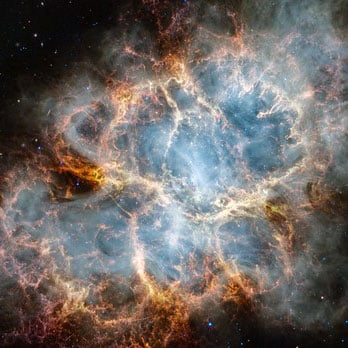
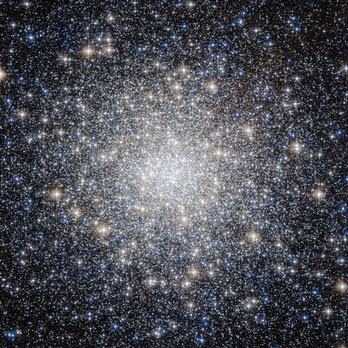
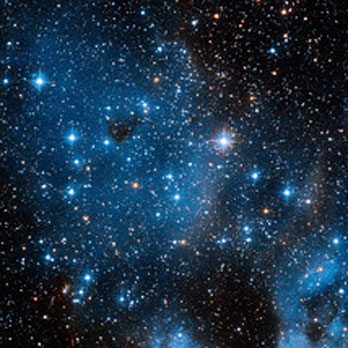
Embarking on Your Astronomical Journey
If you are venturing into the vast world of astronomy, you might be feeling a bit overwhelmed. The best advice is to start small. There may be countless objects to see in the night sky, but even the easiest-to-find will bring joy to you and your fellow astronomers for years to come.

If you live in a densely populated city, you will greatly benefit from taking a trip out to the outskirts where there are fewer lights. You can determine the level of light pollution in your area by using a light pollution map. Even a half-hour drive out of the city can make a significant difference.
Astronomy becomes significantly less enjoyable when attempting to gaze through an overcast sky. Any weather forecast website should list the cloud coverage, but if you want a more comprehensive picture of the sky conditions, check out the website Astropheric. Not only will it show an hourly forecast of cloud coverage for your location, but it will also predict the haziness and turbulence of the atmosphere as well, which are both important factors if you are looking at fainter objects in the sky.
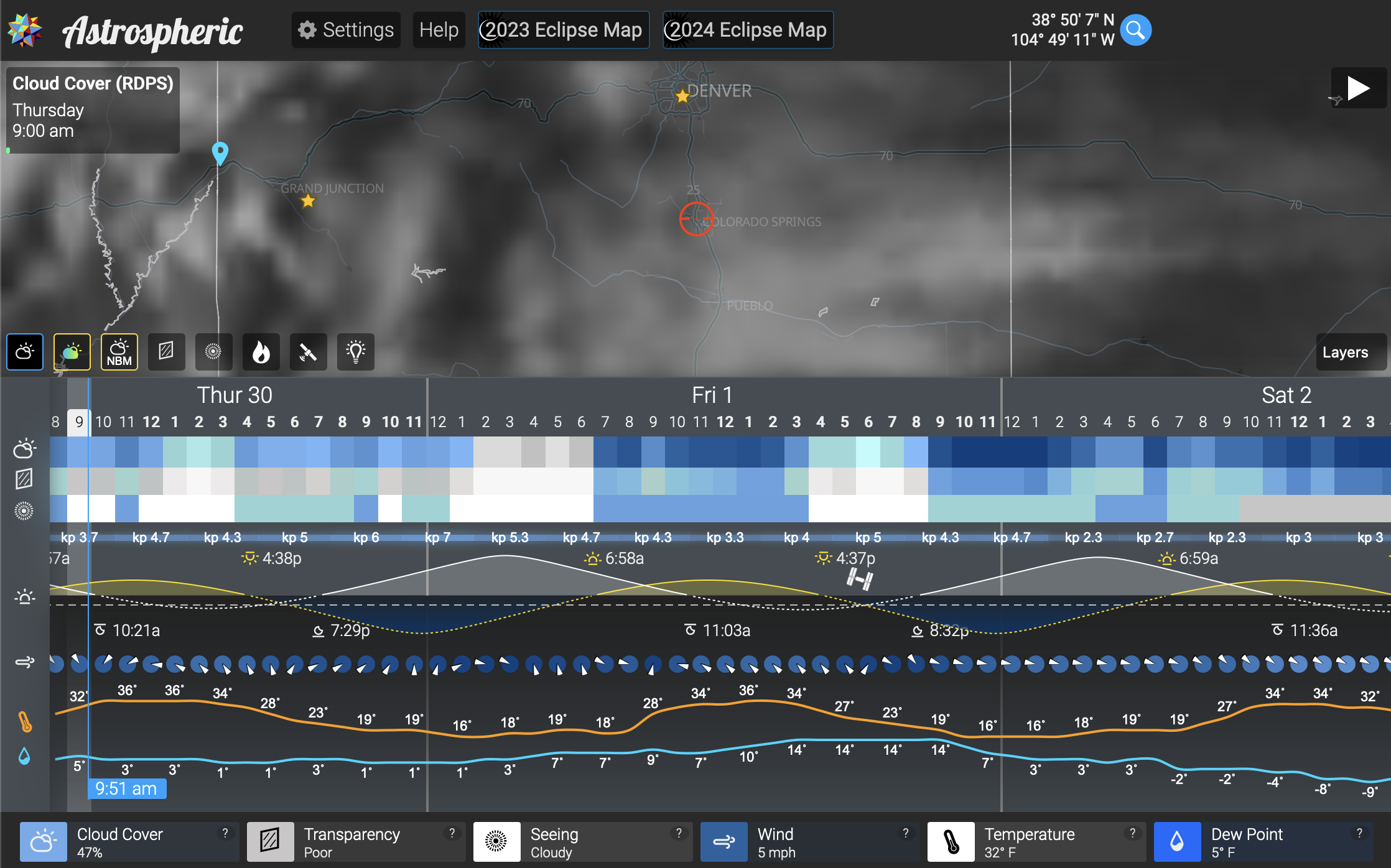
It is helpful to download an astronomy app that suggests good objects to view that night. There are many great options, but some free options that are good for beginners are Stellarium and SkyView. Additional app suggestions can be found on this blog post from the website AstroBackyard.
As a beginner, start with easier-to-find objects like:
- Jupiter, Saturn, and Mars
- The Orion Nebula (Messier 42)
- The Pleiades (Messier 45)
- The Andromeda Galaxy (Messier 31)
- Double Stars like Alberio (Beta Cygni) and Mizar and Alcor (Middle star, which is actually two, in the handle of the Big Dipper asterism)
- And, of course, the Moon
Be mindful that looking at the Full, or nearly Full, Moon through binoculars or a telescope can focus a lot of light on your eyes. For Moon observing, many telescope retailers will sell lunar light filters which can be attached to the eyepiece of your telescope to mitigate the intensity of the lunar brilliance. Without a filter, it may be wise to look for shorter periods of time. The Moon is not dangerous to look at through a telescope, but may be uncomfortable without a filter.
Reminder that the Sun is never a safe object to look at without a proper solar filter designed specifically for solar observation. Never point a telescope or binoculars at the Sun without one.
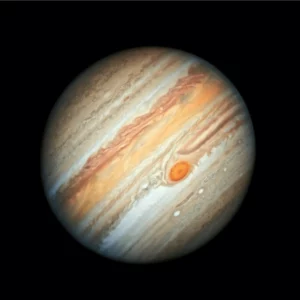
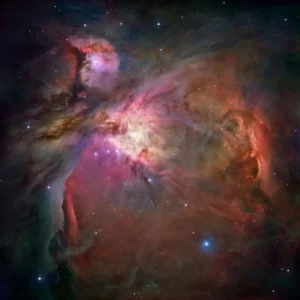
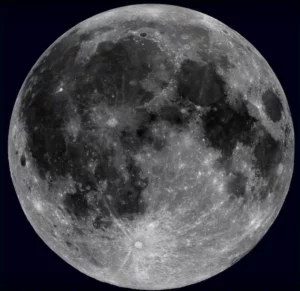
Now, you have checked the weather, picked your location, and collected a list of a few objects to view. But how will you be looking at them? While this article provides an introductory overview of visual astronomy, its goal is to initiate a journey of exploration, fostering a deeper understanding and appreciation for the vastness of the cosmos.
Aaron Bailey is an educator with a background in Astronomy and Physics and writes lessons and designs interactive STEM curricula for many Space Foundation programs. He joined the team in September of 2021. He is responsible for the Family Star Party and is an active member of the Colorado Springs Astronomical Society (CSASTRO). He began the Discovery Center Astronomy Club to bring together STEAM-loving teens to discuss astronomy and space science.
